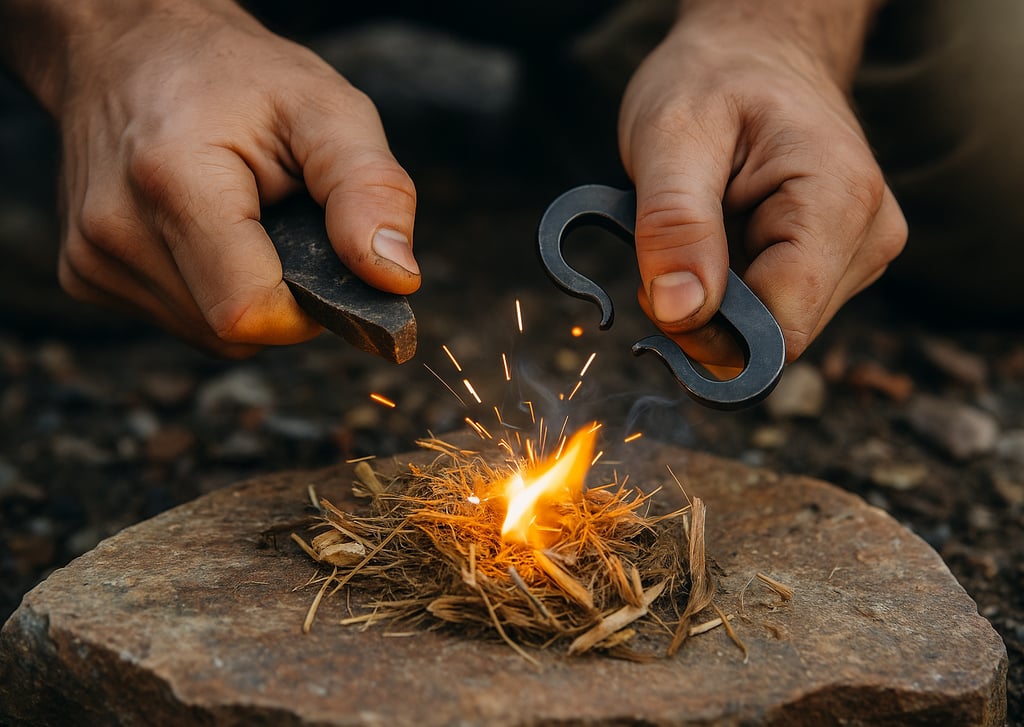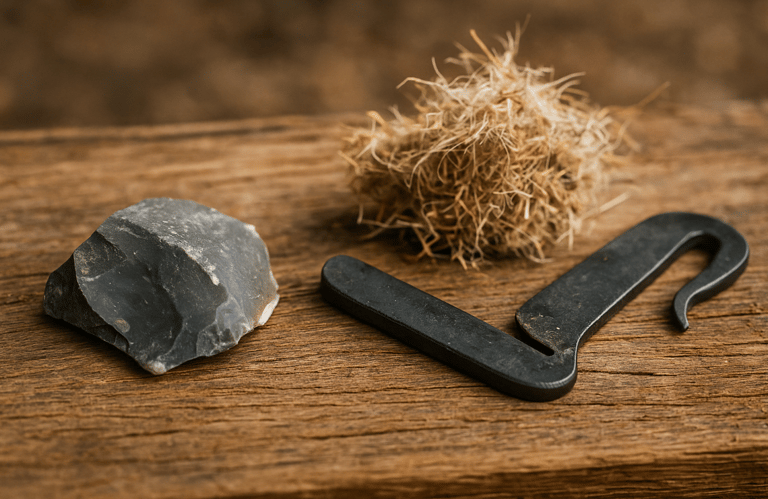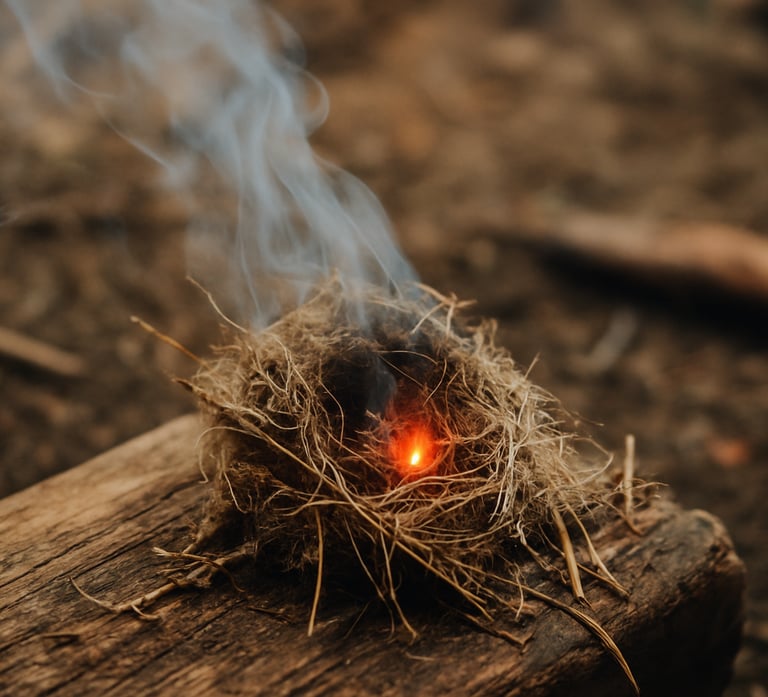How to Start a Fire with Flint and Steel: A Beginner's Step-by-Step Guide
Learn how to start a fire using flint and steel with this easy beginner’s guide. Discover fire-starting tips, survival gear essentials, and how to turn a spark into a steady flame using traditional methods.


How to Start a Fire with Flint and Steel: A Beginner's Step-by-Step Guide
Why Learn to Make Fire with Flint and Steel?
Starting a fire with flint and steel is one of the oldest and most trusted fire-starting techniques in survival history. It’s simple, reliable, and doesn’t depend on modern tools like matches or lighters. Whether you’re learning bushcraft skills or just want to be more self-reliant in the wild, understanding how to use flint and steel can give you the confidence to build a fire no matter where you are.
Flint and steel is just one of several tried-and-true fire-starting methods. If you prefer a modern twist, you can also learn how to use a fire piston or try primitive techniques like the bow drill method — both offer unique challenges and benefits in the wild.
What You Need for Flint and Steel Fire Starting
Before getting started, gather your fire-starting materials. You'll need a piece of flint rock, a steel striker, and a dry tinder bundle. Many people also use char cloth — a fabric that catches a spark easily — though it’s optional. A small tin or fireproof container can help you control the ember as it develops.
Choosing the Right Flint and Steel Tools
Look for a flint rock that’s dense and has sharp edges. Your steel striker should have a flat edge and feel solid in your hand. The sharper the edge of your flint, the easier it will be to generate sparks. While survival kits often include dedicated tools, in a pinch you can improvise with natural stones and scrap metal — just be safe and aware of what you’re using.
Preparing the Tinder Bundle
The tinder bundle is where your sparks will land and where your fire begins. Use dry, fibrous materials like dried grass, cotton balls, bark shavings, or natural fibers. Arrange them into a loose nest shape, which allows air to flow and gives your spark a better chance to catch. If you're using char cloth, tuck it gently into the center of your bundle.
Striking Flint and Steel to Create Sparks
Hold your flint rock firmly in one hand and your steel striker in the other. Angle the striker so it scrapes down across the edge of the flint quickly. The goal is to shave off tiny pieces of steel that ignite when exposed to air. Direct your sparks toward the char cloth or dry fibers in your tinder nest. It may take a few strikes — don’t get discouraged.
Turning a Spark into Flame
Once you see a spark catch and your char cloth or tinder starts to smolder, gently blow on it to help the ember grow. Don’t blow too hard — a soft breath helps the ember spread. As smoke increases and the bundle begins to glow, add small twigs or kindling to build it into a flame.
Practice Makes Perfect
Lighting a fire with flint and steel isn’t about force — it’s about technique and patience. The more you practice, the faster you’ll develop a feel for the right strike angle and pressure. Once mastered, it’s a dependable fire-starting method that’s especially helpful in wet or cold conditions where matches may fail.
Once you’ve gotten the hang of flint and steel, consider learning other primitive fire-starting techniques, like starting a fire using a magnifying glass on a sunny day or trying the friction-based fire plough method, which relies solely on wood and effort to generate heat.
Final Thoughts on Traditional Fire Starting
Making fire with flint and steel connects us to centuries of survival wisdom. It’s a satisfying skill to learn and can be a game-changer when you’re out in the wilderness. Whether you’re camping, backpacking, or preparing for emergencies, knowing how to strike a spark and build a fire is one of the most useful wilderness skills you can have.




© 2025. All rights reserved About | Privacy Policy | Terms and Conditions | Affiliate Disclosure | Disclaimer


